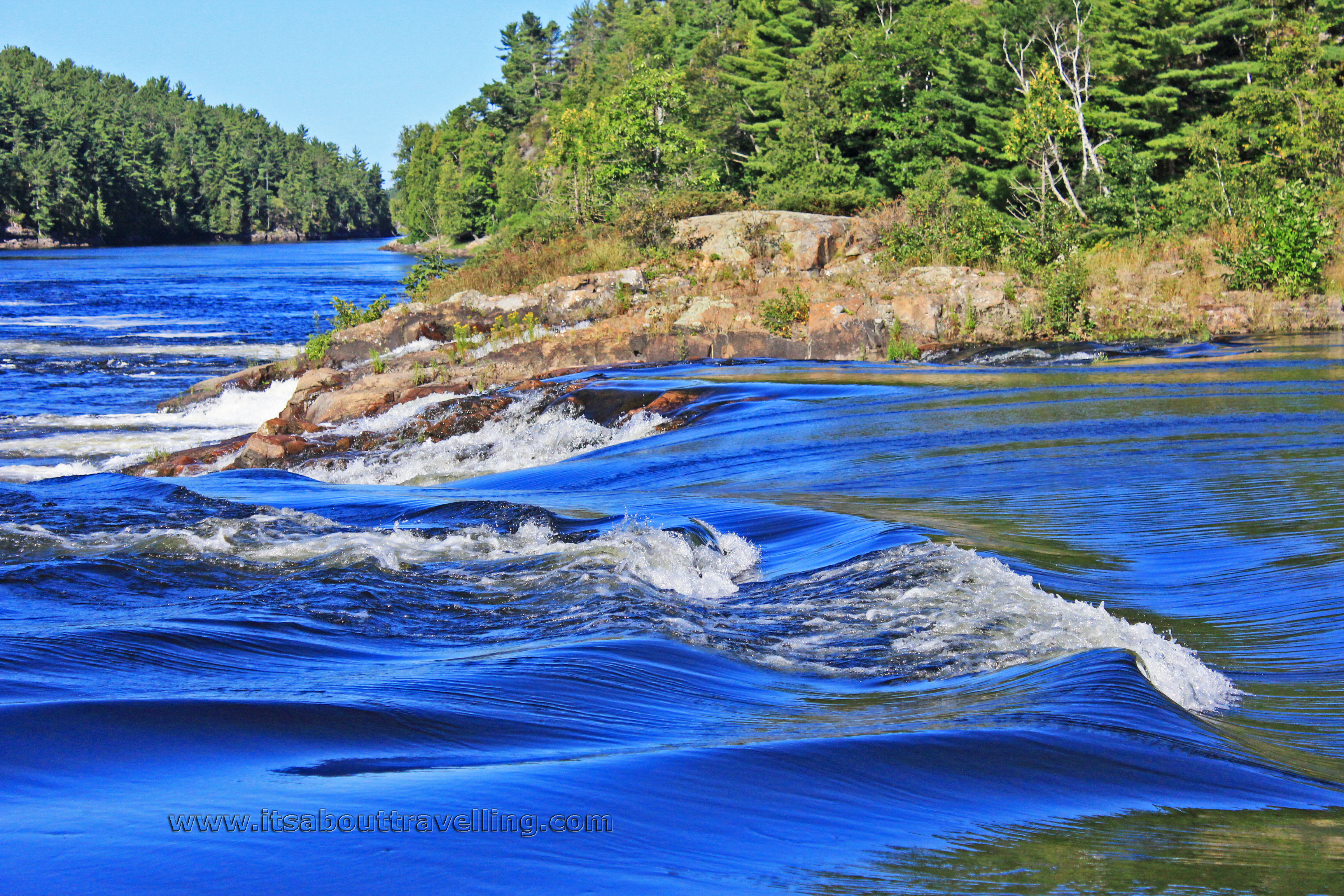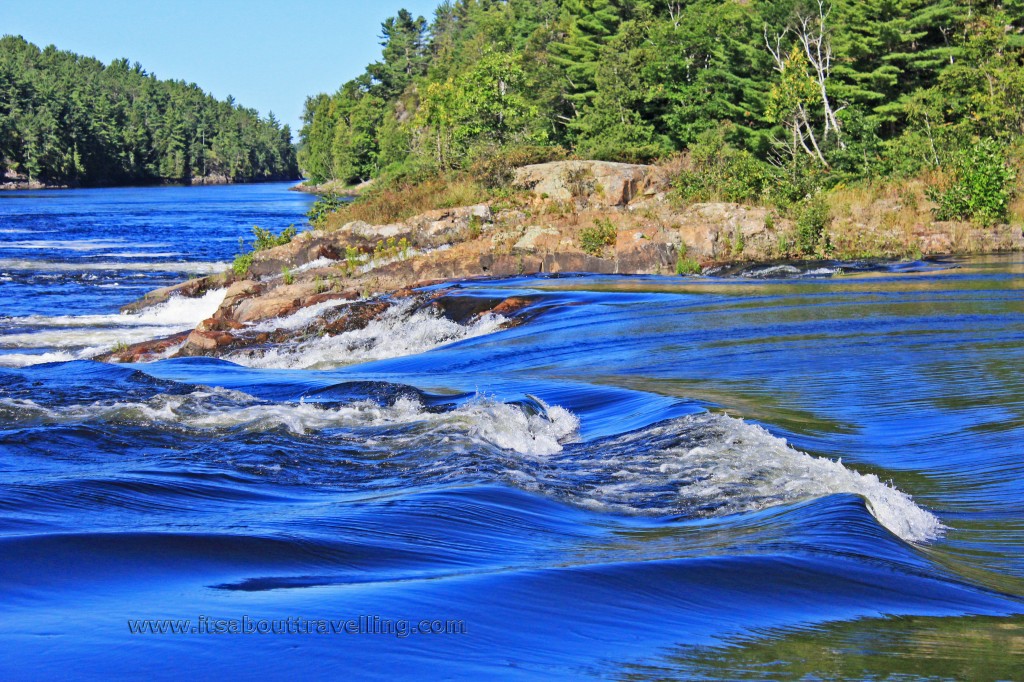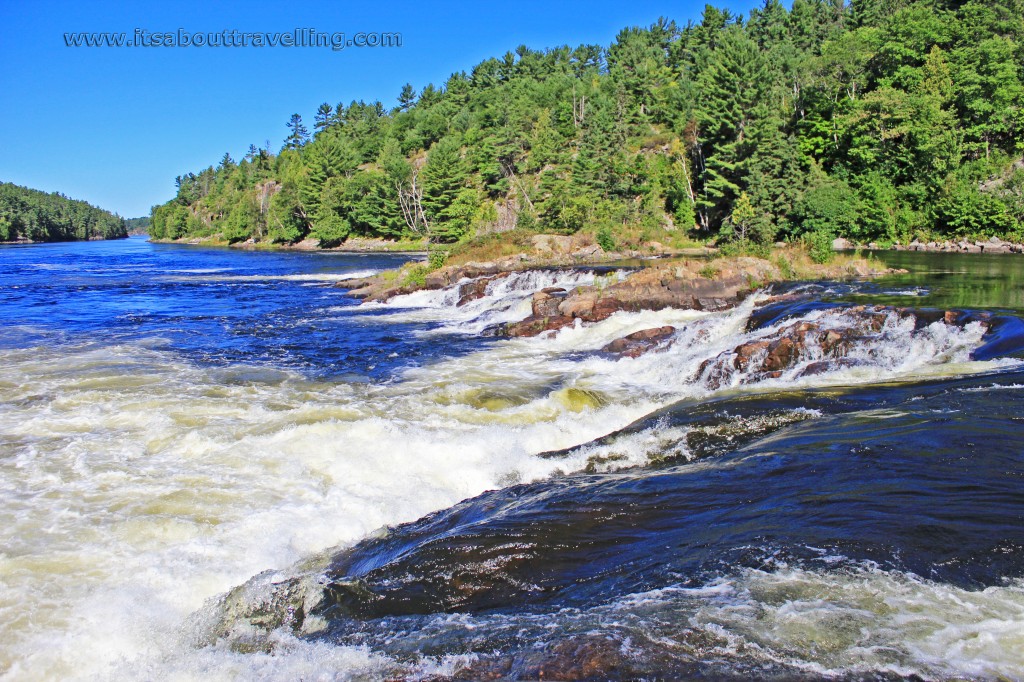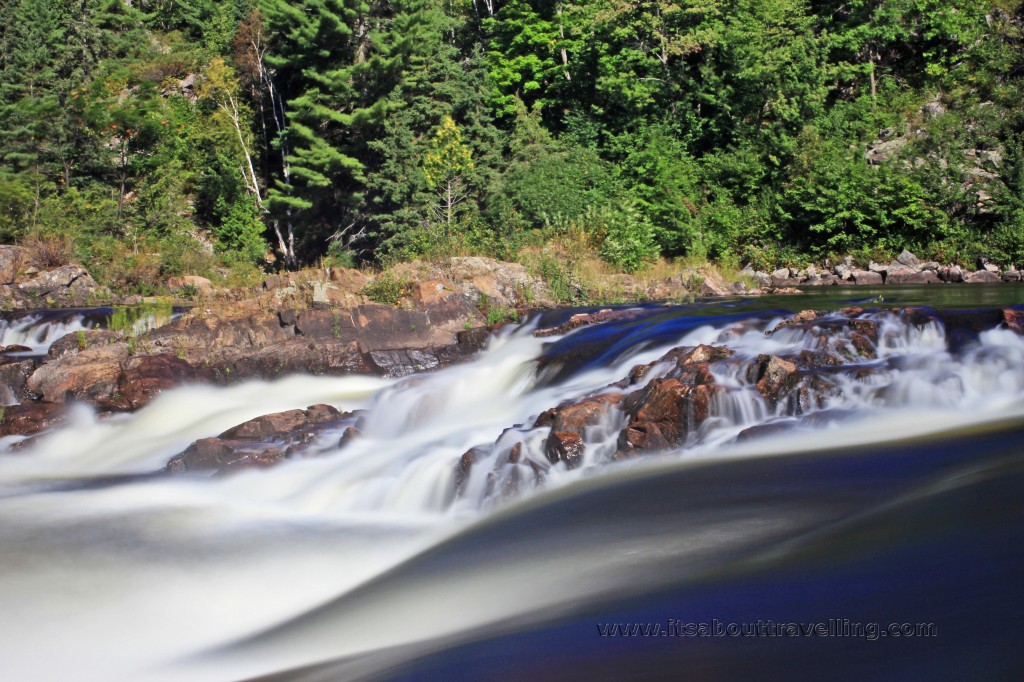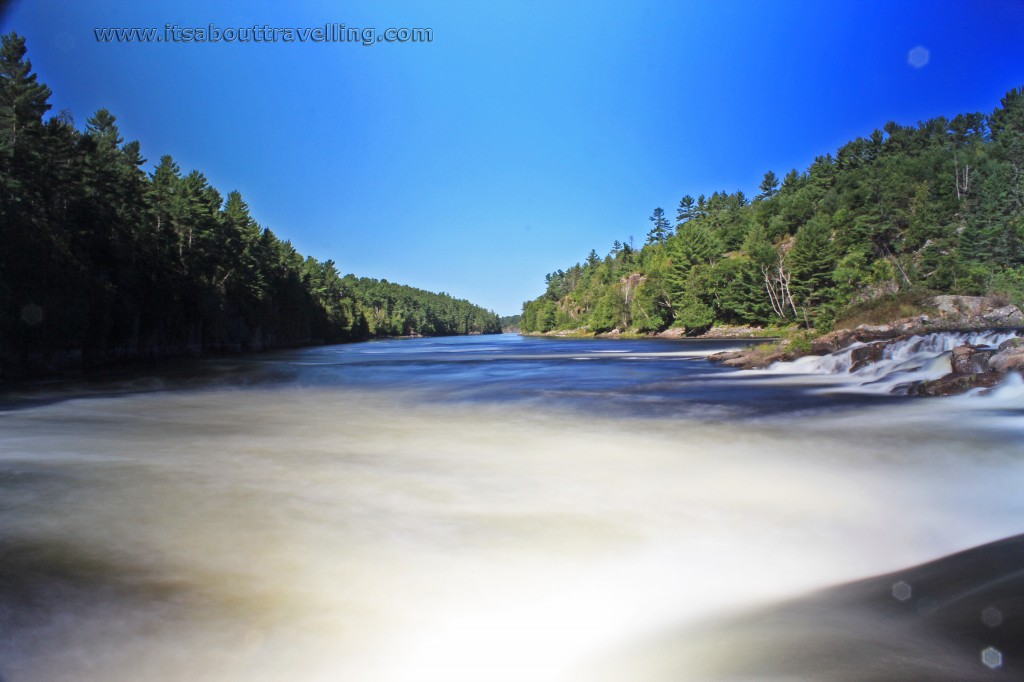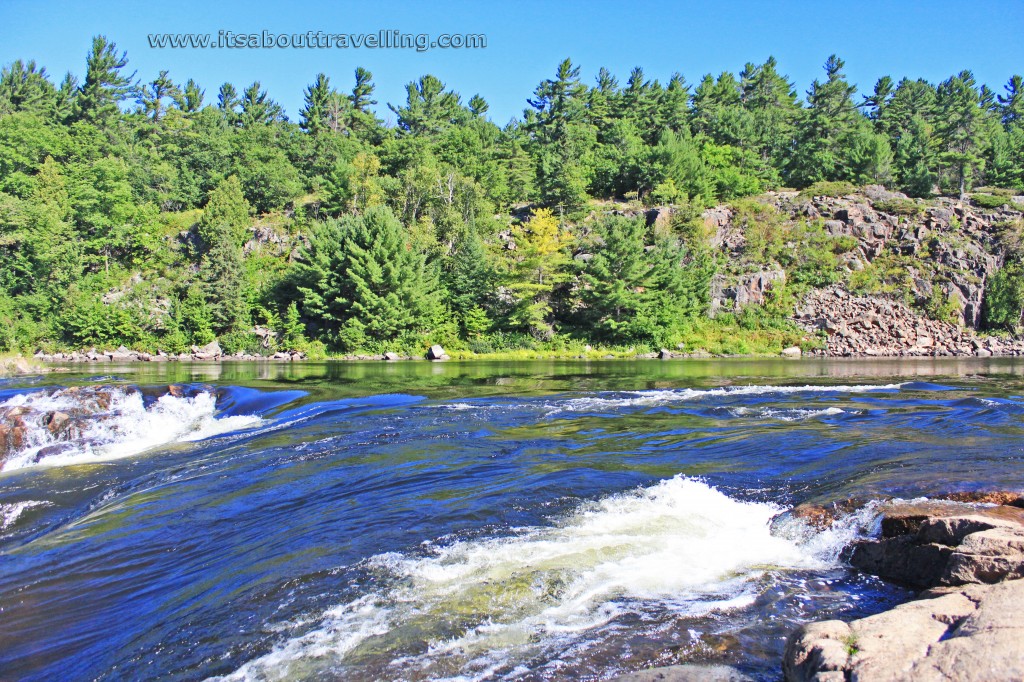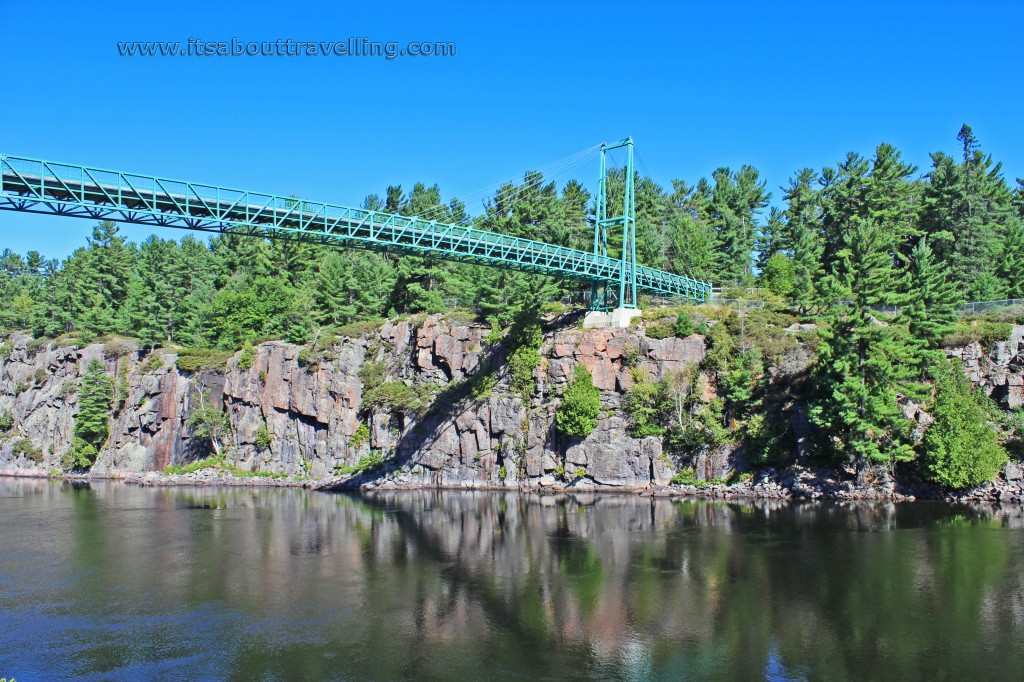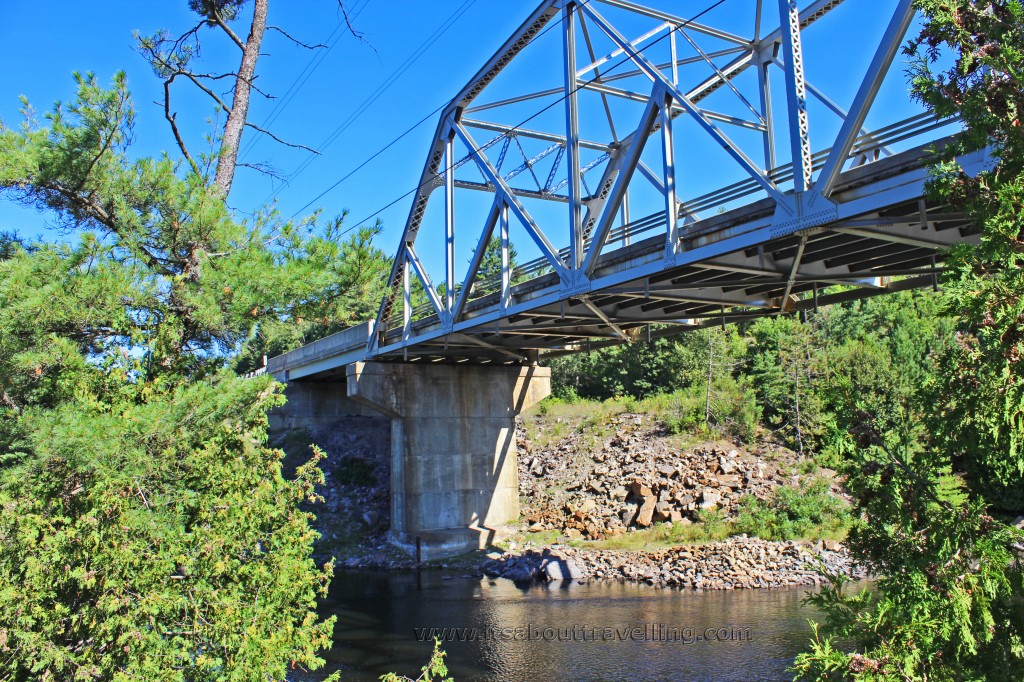The evil world of mass media and corporations would have you believe that Canada is defined by coffee injected with addictive qualities, gravy and cheese soaked deep fried potatoes and grossly overpaid hockey players. It’s places like the French River and Recollet Falls that make you realize what Canada is really all about.
Tucked away behind the French River Provincial Park rest area along highway 69, about 69 kilometres south of Sudbury, Ontario, Recollet Falls is a force of nature that really must be seen. The price is right – there are no fees to visit this portion of the provincial park.
Recollet Falls
The rest area is impressive enough with an architecturally award winning visitor centre infused right into the rock face of the Canadian Shield. At this point, there is a pedestrian bridge (see image below) that crosses the impressive French River Gorge, just to the west of Highway 69 (the extension of highway 400 out of Toronto). For 99.9% of those who stop here, this is as far as they get.
The Recollet Falls Trail starts from right beside the visitor centre but mostly goes undetected by those using the restrooms and checking out the gift shop. It is a relatively short two kilometre hike to the Falls. The trail is not overly difficult but I wouldn’t want to do it in the rain. Your often walking on uneven stretches of rock that can become quite slippery.
It’s not the drop that is impressive. The waterfall looks to be no more than ten feet from crest to base. What is amazing is the speed of the water, the sheer volume of water and the immense power of Mother Nature over the short drop.
French River Provincial Park is quite a large park. However, the Recollet Falls Trail is the only hiking trail. The park covers 517 square km or 200 square miles and has 230 backcountry campsites, accessible only via canoe. The park includes much of the French River Delta as it empties into Georgian Bay.
The French River travels 110 km from Lake Nipissing to Georgian Bay and the Great Lakes. It serves as the boundary between Parry Sound District and Sudbury District while being the unofficial dividing line between Southern and Northern Ontario. The river served as a portion of the Cross Canada super highway of the 1600’s, connecting Montreal to Lake Superior via the Ottawa River and Mattawa River.
There is a historical plaque erected near the waterfall. It was erected in 1993 by the Friends of the French River Heritage Park with the assistance of the Ontario Heritage Foundation. The Ontario Heritage Foundation is now the Ontario Heritage Trust – the same organization that holds the Cheltenham Badlands, a location we featured this past week.
This is quite a historical site and the plaque reads like this:
These treacherous falls were the scene of many hundreds of portages by missionaries going to and from the missions established in Huronia in 1615. The Recollet Fathers were the first to use the French River, the most direct waterway to the west. Though they were few in number, their work among the Amerindians and as chaplains to exploratory and military expeditions is well recorded in early Canadian history. With the capture of the colony of New France by the Kirke brothers in 1629, the Recollet Fathers were compelled to leave. Though early maps of the French River indicate the falls, in french, as “sault’ the name was changed to Recollet Falls apparently for its association with the Recollet Fathers.
The Recollet Fathers, or simply Recollets, were a French reform branch of the Order of Friars Minor – also known as the Franciscans. Their first mission to Canada from France sailed with Samuel de Champlain in 1615.
The trail, falls and canyon are ideal for photographers with the trail running along the south side of the east to west river. The sun and reflections can be quite amazing, especially early in the morning.
Is the river crossable? Can you float down on a tube or swim the chute? I would say no. Even with the deep water, signs of the speed of flow is evident all along the river. Over the waterfall, there are some massive rocks hidden beneath the water. At the base, the smashing water creates a crushing ‘washing machine effect’ that would easily trap victims. However, I’m sure for a veteran kayaker, it would be a walk in the park.
Above: view of the pedestrian bridge. Below: first the car bridge of highway 69 and second a rail bridge upstream.
Wildlife? We didn’t see much – a few red squirrels and a really cool caterpillar. However, if you’re lucky, you’ll spot a rare Massasauga Rattlesnake. There were signs of deer and other smaller critters, leaving their tracks in the mud. Certainly there are bear in the area, but we didn’t see any sign. For anglers, the fishing in the river is supposed to be great but there are restrictions in place to prevent over-fishing.
I always find it funny, the contrast between where we leave on the outskirts of the Greater Toronto Area and these ‘wild’ landscapes just a short 2-3 hour drive away. Down in the populated ant-farm regions to the south, we live in such a bubble-wrapped society where anything beyond a flat piece of land is considered a potential safety hazard and will be fenced off with a wide collection of warning signs posted. Hidden cameras are likely on site and a hefty fine is a possibility for those who don’t heed the warning.
Meanwhile, to the north where the population density drops significantly, common sense and judgement suddenly play extremely prominent roles. In the higher traffic area at the French River Visitor Centre, there is a chainlink fence erected for a bit of a distance between the walking bridge and the highway bridge.
However, it is just suggested that beyond the fence is a dangerous area. There are warning signs that state that beyond the fence is an abrupt cliff but there are no signs saying ‘keep out’ and warning of potential prosecution if the fence is hopped. Amazingly, with this semi-deterrent and the area not being monitored, very few plunge to their death.
But, most other areas, like Recollet Falls, or, say Muskoka High Falls to the southeast, have no warning signs or safety barriers. Folks, that’s what makes it beautiful.
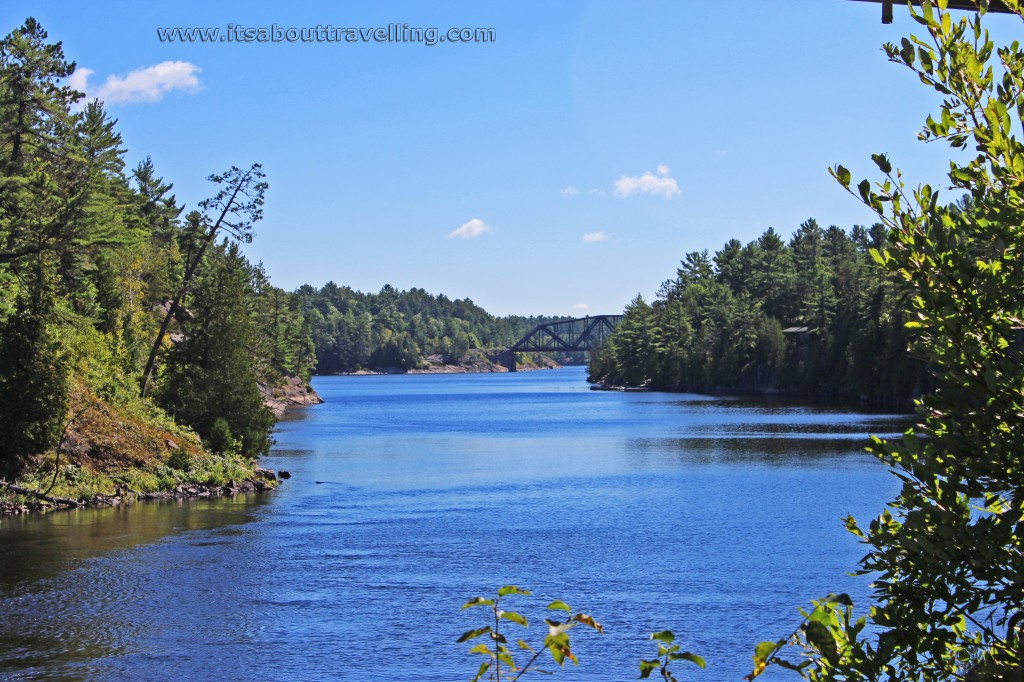 The HD Video below is made up of clips taken the same day as the images above. This better shows the power of the French River. I’m sure you’ll like it and hopefully be inspired to make the trip up to Recollet Falls.
The HD Video below is made up of clips taken the same day as the images above. This better shows the power of the French River. I’m sure you’ll like it and hopefully be inspired to make the trip up to Recollet Falls.
Recollet Falls Video
